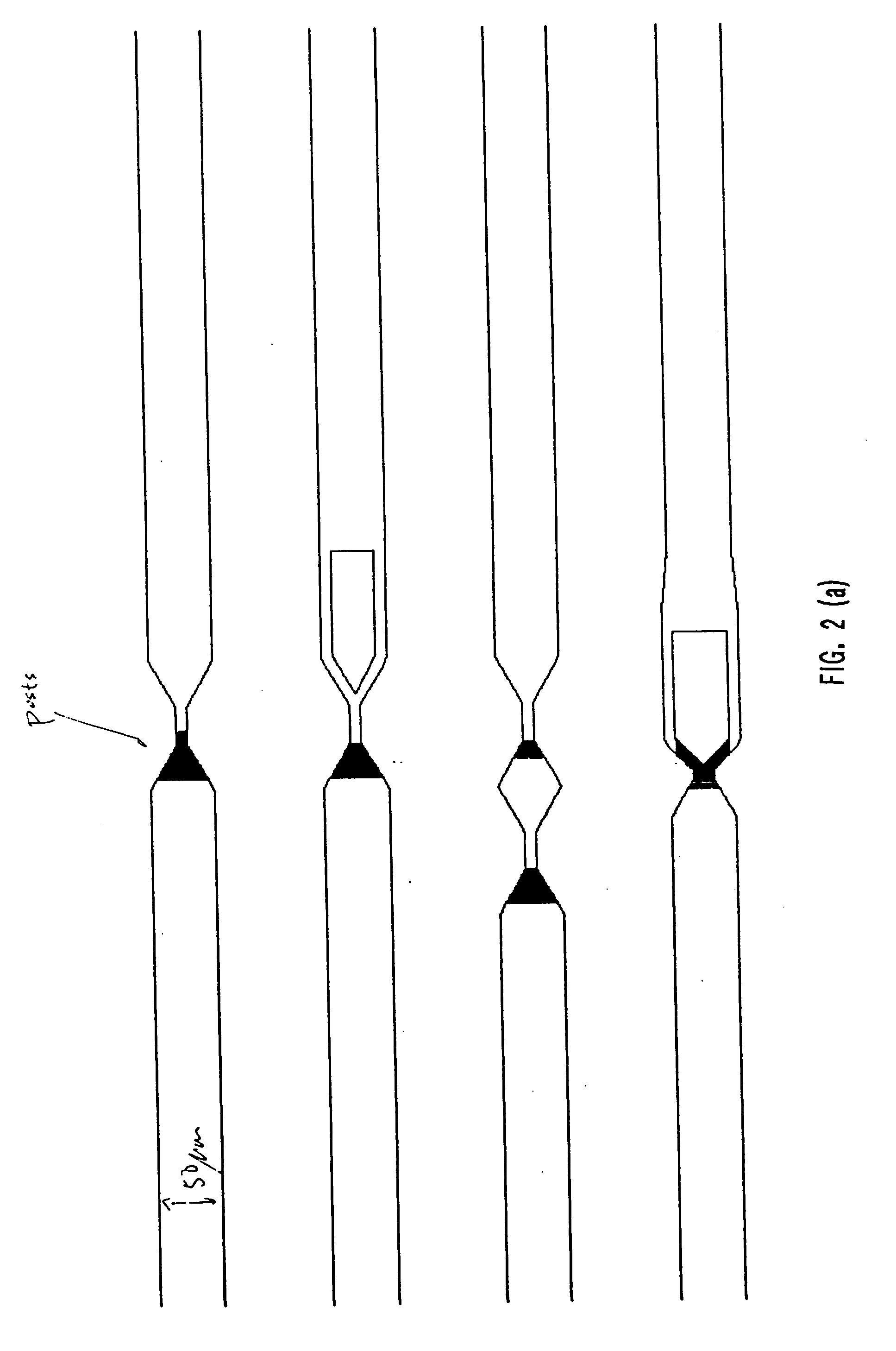Methods and apparatuses for stretching polymers
a polymer and polymer technology, applied in the field of polymer characterization, can solve the problems of difficult to adapt the technique to a high-throughput operation, difficulty in further modification of the polymer, and difficulty in automating the technique, so as to reduce the channel depth
- Summary
- Abstract
- Description
- Claims
- Application Information
AI Technical Summary
Benefits of technology
Problems solved by technology
Method used
Image
Examples
example 1
6.1 Example 1
Fabrication of a Chip for Stretching DNA and its Use in an Apparatus for Detecting Fluorescence Emission from Labeled DNA
[0227] Experimental Apparatus.
[0228] A sensitive optical apparatus for detection is shown in FIG. 24. The apparatus utilizes confocal fluorescence illumination and detection. Confocal illumination allows a small optical volume (of the order of femtoliters) to be illuminated. Both Rayleigh and Raman scattering are minimized using a small probe volume. The beam from a 1 mW argon ion laser is passed through a laser line filter (514 nm), directed to a dichroic mirror, through a 100.times.1.2 NA oil immersion objective, and to the sample. The fluorescent tag on the DNA can be one of several dyes including Cy-3, tetramethylrhodamine, rhodamine 6G, and Alexa 546. In addition, intercalator dyes can be used such as TOTO-3 (Molecular Probes). The fluorescence emission from the sample is passed through a dichroic, a narrow bandpass (e.g.. Omega Optical), focused...
example 2
6.2 Example 2
Stretching of Phage Lambda DNA Using Apparatuses of the Invention
[0240] Two different apparatuses were used to obtain the data shown in FIGS. 30(a) and 30 (b). The apparatus shown in FIG. 20 was used to obtain the data shown in FIG. 30 (b). The apparatus used to obtain the data in FIG. 30 (a) had the same channel boundaries as the apparatus used to obtain the data shown in FIG. 30 (b) (i.e., the ratio of the sizes of the two tapered regions of the two-funnel apparatus were identical), except that there were no posts present in the structure.
[0241] A fused silica wafer (Hoya Corp., San Jose, Calif.) was etched with the pattern in FIG. 20 by a contractor using photolithographic methods described above. The wafer was diced into 1 cm by 2 cm chips using a dicing saw (e.g. from Disco Corp., Santa Clara, Calif.), and a fused silica cover slip (e.g. from Esco, Oak Ridge, N.J.) was attached by thermal bonding.
[0242] Double stranded lambda DNA (Promega, Madison, Wis.) having a u...
PUM
| Property | Measurement | Unit |
|---|---|---|
| angle | aaaaa | aaaaa |
| width | aaaaa | aaaaa |
| width | aaaaa | aaaaa |
Abstract
Description
Claims
Application Information
 Login to View More
Login to View More - R&D
- Intellectual Property
- Life Sciences
- Materials
- Tech Scout
- Unparalleled Data Quality
- Higher Quality Content
- 60% Fewer Hallucinations
Browse by: Latest US Patents, China's latest patents, Technical Efficacy Thesaurus, Application Domain, Technology Topic, Popular Technical Reports.
© 2025 PatSnap. All rights reserved.Legal|Privacy policy|Modern Slavery Act Transparency Statement|Sitemap|About US| Contact US: help@patsnap.com



